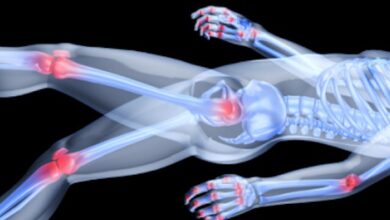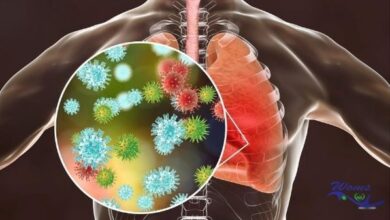Fever

Fever is the point at which a human’s body temperature goes over the typical scope of 36– 37° Centigrade (98– 100° Fahrenheit). It is a typical therapeutic sign. Different expressions for a fever incorporate pyrexia and controlled hyperthermia.
As the body temperature goes up, the individual may feel cool until the point that it levels off and quits rising Individuals’ ordinary body temperatures may shift and are influenced by components, for example, eating, exercise, dozing, and what time it is. Our body temperature is for the most part at its most noteworthy at around 6 p.m. also, at its most reduced at around 3 a.m.
A high body temperature, or fever, is one of the manners in which our insusceptible framework endeavours to battle a contamination. More often than not, the ascent in body temperature helps the individual determination a disease. In any case, here and there it might ascend excessively high, in which case, the fever can be not kidding and prompt entanglements.
Specialists say that as long as the fever is mellow, there is no compelling reason to cut it down – if the fever isn’t serious, it is most likely killing the causative agent . Meds to cut down a fever are called antipyretics. On the off chance that the fever is causing undue inconvenience, an antipyretic might be suggested.
At the point when a fever comes to or surpasses 38° Centigrade (100.4° Fahrenheit), it is never again mellow and ought to be checked each couple of hours.
These temperatures allude to oral estimation, when the thermometer is placed in the mouth. For ordinary armpit temperatures, the temperature estimates lower than it really is and the numbers are decreased by about 0.2– 0.3° Centigrade.
Indications
- When someone has a fever, signs and indications are connected to what is known as infection conduct, and may include:
- shuddering
- absence of hunger
- Drying out — preventable if the individual beverages a lot of liquids
- misery
- Hyperalgesia, or expanded affectability to torment
- dormancy
- issues concentrating
- drowsiness, perspiring
In the event that the fever is high, there may likewise be extraordinary fractiousness, disarray, incoherence, and seizures.
Causes
Fever can be caused by various variables:
- contamination, for example, strep throat, influenza, chickenpox, or pneumonia
- Rheumatoid joint pain
- a few drugs
- overexposure of skin to daylight, or sunburn
- warm stroke, coming about either by an introduction to high temperatures or delayed strenuous exercise
- lack of hydration
- silicosis, a kind of lung illness caused by long haul presentation to silica dust
- amphetamine misuse
- liquor withdrawal
Types of fever
Fevers can be characterized by to what extent they last, regardless of whether they travel every which way, and how high they are.
Seriousness
A fever can be:
- poor quality, from 100.5– 102.1°F or 38.1– 39°C
- moderate, from 102.2– 104.0°F or 39.1– 40°C
- high, from 104.1– 106.0°F to or 40.1-41.1°C
- Hyperpyrexia, above 106.0°F or 41.1°C
The stature of the temperature may help show what sort of issue is causing it.
Period of time
A fever can be:
- ⦁ intense on the off chance that it keeps going under 7 days
- ⦁ sub-intense, in the event that it endures up to 14 days
- ⦁ endless or persevering, on the off chance that it endures for more than 14 days
- ⦁ Fevers that exist for a considerable length of time or weeks with no clarification are called fevers of undetermined cause (FUO).
In youngsters
Youngsters with a high temperature may build up a febrile seizure, otherwise called a febrile fit or febrile spasm; the vast majority of these are not genuine and can be the aftereffect of an ear contamination, gastroenteritis, or a respiratory infection, or a chilly. Less ordinarily, febrile seizures might be caused by something progressively genuine, such meningitis, a kidney contamination, or pneumonia.
Febrile seizures most usually happen in youngsters matured a half year to 6 years and influence young men more frequently than young ladies.
Seizures happen in light of the fact that the body temperature rises excessively quick, instead of on the grounds that it has been continued for quite a while.
There are two sorts of febrile seizures:
1) Simple febrile seizure – the seizure keeps going no longer than 15 minutes (much of the time under 5 minutes) and does not happen again amid a 24-hour term.
It ordinarily includes the entire body — a summed up tonic-clonic seizure. Most febrile seizures are of this sort. Indications — the body turns out to be solid and the arms and legs begin to jerk, the patient loses cognizance (however the eyes remain open).
There might be unpredictable breathing, and the youngster may urinate, poo, or both. There could likewise be spewing.
2) Complex febrile seizure – the seizure endures longer, returns all the more frequently, and tends not to influence the entire body, yet rather just piece of the body.
This sort of seizure is a reason for more worry than straightforward febrile seizures.
Much of the time, a tyke with a seizure ought to be seen by a human services supplier. We can control temperature with acetaminophen (paracetamol) or wiping. In the event that vital, an anticonvulsant, for example, sodium valproate or clonazepam might be endorsed.
Finding
Diagnosing a fever is direct – we take the patient’s temperature , if the perusing is high, they have a fever. It is imperative to take the individual’s temperature when they are very still in light of the fact that physical action can warm us up.
An individual is said to have a fever if:
⦁ When the temperature of the mouth is recorded over 37.7° Centigrade (99.9° Fahrenheit).
⦁ The temperature in the rectum (rear-end) is over 37.5– 38.3° Centigrade (100– 101 Fahrenheit).
⦁ The temperature under the arm or inside the ear is over 37.2 Centigrade (99 Fahrenheit).
Since fever is a sign as opposed to a sickness, when the specialist has affirmed there is a lifted body temperature, certain analytic tests might be requested. Contingent upon what different signs and indications exist, these may incorporate blood tests, pee tests, X-beams, or other imaging filters.
Treatment
Non-steroidal calming drugs (NSAIDs, for example, headache medicine or ibuprofen can help cut a fever down. These are accessible to buy over-the-counter or on the web. In any case, a gentle fever might help battle the bacterium or infection that is causing the disease. It may not be perfect to cut it down.
In the event that the fever has been caused by a bacterial contamination, the specialist may endorse an anti-infection.
On the off chance that a fever has been caused by a cool, which is caused by a viral disease, NSAIDs might be utilized to ease awkward indications. Anti-infection agents have no impact against infections and won’t be recommended by your specialist for a viral disease.
Liquid admission: Anyone with a fever ought to devour a lot of liquids to avoid parchedness. Drying out will confound any ailment.




